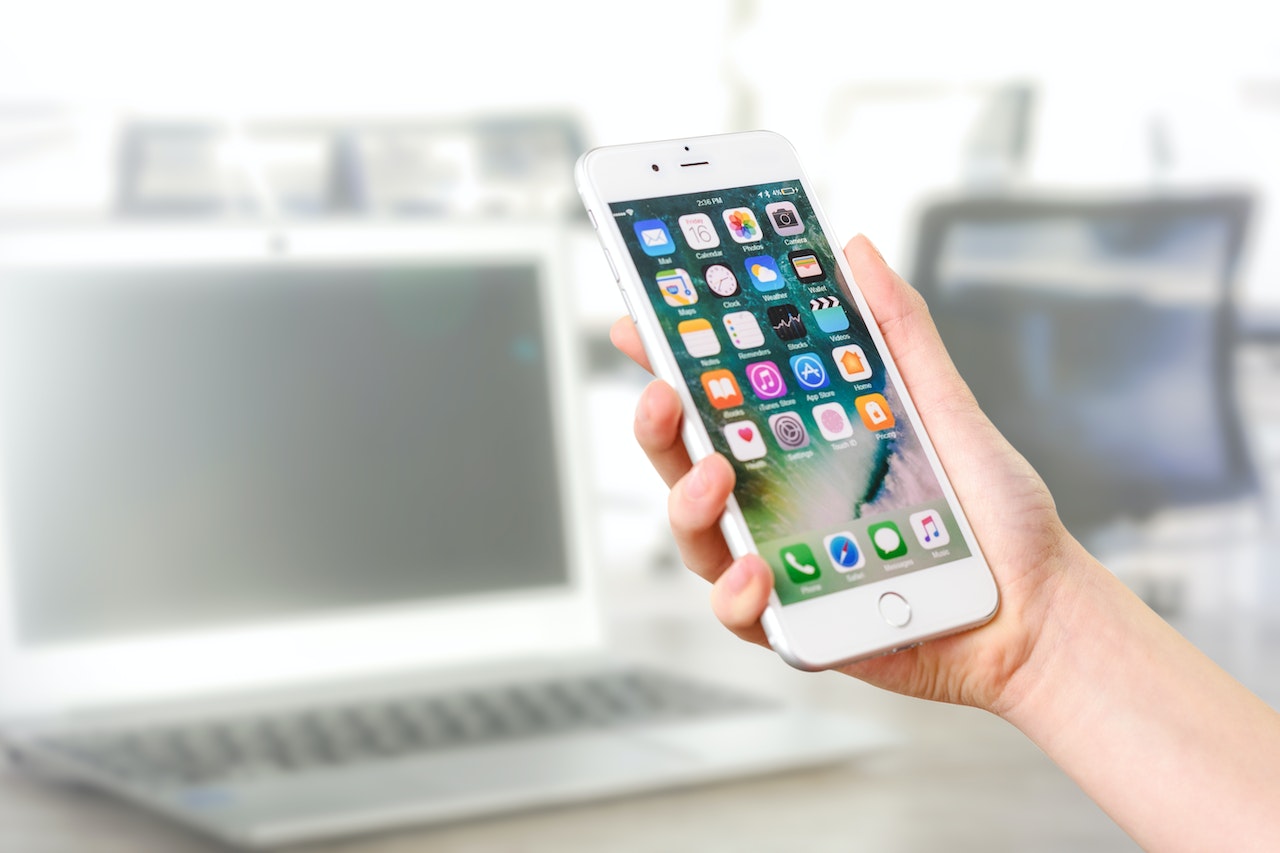For all the newbies to the Apple world, still in awe wielding your brand new polished iPhone, immersed in the wonders of iOS, well read on, as we explain how you can tweak your display illumination and colour tone to your personal preferred taste.
Although this may sound basic and straight forward, you will be pleasantly surprised to find out that there is more than one method, and I dare to add that most probably even regular iPhone users aren`t aware about all of these techniques.
Changing Brightness from the Control Centre
Of course the easiest way to adjust your phone`s screen brightness is by accessing the Control Centre on iOS by swiping down from the top right corner of the screen.
For those users who don`t change their phones too often (respect, I salute you) and still have a home button, but it can also be that you own a 2022 SE model since that too comes with a home button, well you need to swipe up from the bottom edge of the screen instead.
Once Control Centre is open, you will notice a brightness slider on the left-hand side of the volume slider. Tap, hold and drag the slider upwards or downwards to increase or decrease your phone`s brightness.
Via Settings
Open Settings and click on Display & Brightness, under which you will notice a brightness slider. To lower or increase the quantity of light emanating from your screen, simply drag the slider towards the left or right accordingly.
Auto-Brightness – let iOS do it for you!
Alternatively, if you wish to avoid going manual about these settings each and every time, you can leave iOS system to automatically adapt the brightness for you, thanks to the ambient light sensors that detect the surrounding light conditions. All modern iPhones come with these sensors.
All you have to do is open Settings/Accessibility/Display & Text Size, scroll down and switch on Auto-Brightness.
By doing this, you will notice that the brightness sliders in both Settings and Control Centre move on their own, based on the light conditions in the room, without your manual intervention.
This can be an obvious advantage, however there are users who will need constant brightness say for productivity, media consumption or gaming.
It all bores down to the user`s preferences.
What is True Tone?
Modern iPhones come with advanced multi-channel sensors that not only detect the surrounding amount of light, but also matches it with the colour and intensity of your display.
This info will trigger the iOS system to adjust your iPhone`s display by altering the white balance to appear natural and diminish eye strain.
True Tone however is only available on iPhone 8 or later models.
Toggling the True Tone
To change the True Tone on your iPhone, go to Settings/Display & Brightness and switch on True Tone, thus allowing the iPhone to change your display`s colour tone dynamically.
True Tone can also be changed from the Control Centre, by tapping and holding on the Brightness slider. This way that space is expanded showing the True Tone option, click on it to activate it.
Do it with Dark Mode!
The embedded Dark Mode option is ideal to darken the phone`s background, thus enhancing the colour of the user interface (UI) elements and make them pop. Furthermore, it will lessen the strain on the user`s eyes by minimising bright light. This will be also appreciated by anyone near you especially in dark ambiences like say at the cinema or in bed. Last but not least, it will assist in saving on that precious battery juice!
In our case, we would need Dark Mode to control brightness, let`s see how.
Via Settings
Access Settings/Display & Brightness/Appearance – choose Dark.
Here you will also find the Automatic toggle, which you can switch on if you want iOS to activate Dark Mode automatically at a chosen time of the day which can be selected from Options, like say Dark Until Sunrise.
If you want Dark Mode to be triggered in the evening you can choose Sunset to Sunrise in the Appearance Schedule next page, or Custom Schedule if you want it set at a specific time. The latter will let you choose between Light and Dark with their own specified times.
Via Control Centre
If you find the above a bit complex for your taste, you can always switch on Dark Mode via Control Centre`s Brightness slider. Simply launch the Control Centre, then tap and hold on the Brightness slider to obtain more options. Once it expands, tap on Dark Mode to enable it.
Adding Dark Mode to Control Centre
This is done by opening Settings and access Control Centre. Inside More Controls, click on the green plus (+) situated on the left-hand side of the Dark Mode option.
This way Dark Mode option will be located directly in your Control Centre when you swipe from the top of your screen, or up from the bottom if you hold an iPhone with a home button, making the whole process swifter. In your Control Centre you can now tap on Dark Mode to switch it on, and again to switch it off.
Reduce White Point
Wrapping up.
If by decreasing the brightness and using Dark Mode is still not enough for your poor delicate eyes, especially in a dark room say while reading before you sleep, well there`s always an extra layer of darkness that can be applied to your iPhone`s display – Reduce White Point option.
To obtain, just access Accessibility option from Settings, then select Display & Text Size, and there you will find the Reduce White Option, toggle it on, and you can also drag the slider beneath it to choose an intensity level which you feel is right for you.
Reduce White Point can also be accessed via the Control Centre, or added directly to your Control Centre, similar to what we already explained in the Dark Mode section above.

